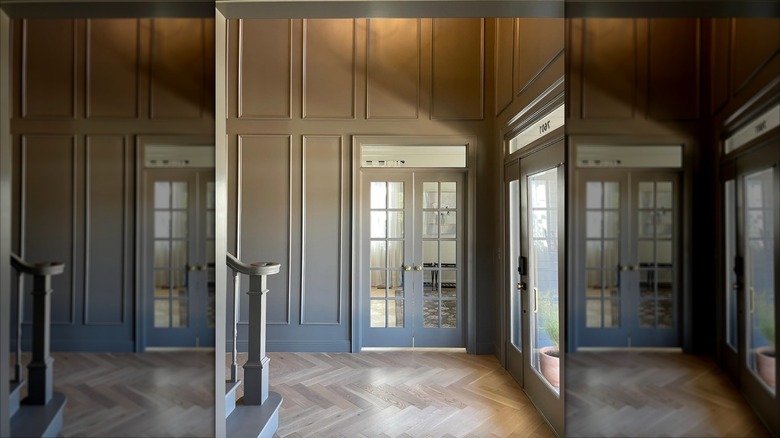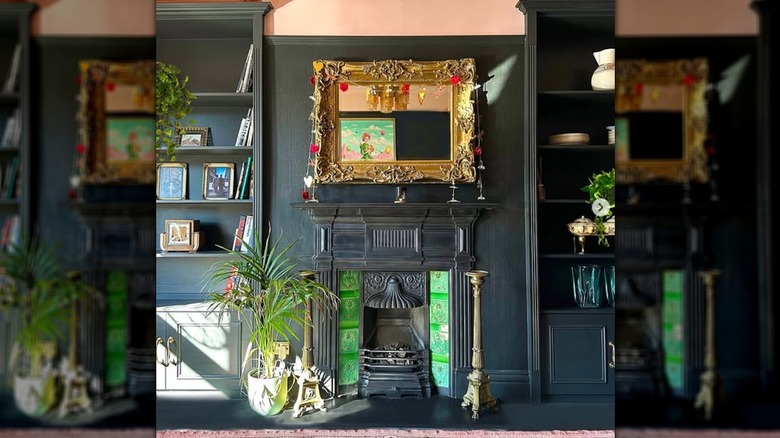Small-Space Color Drenching Tricks That Make Any Shade Work
Got tiny rooms but a hankering for splashing them in solid color? Nothing's stopping you from experimenting with an extreme dose of dramatic of a dramatic shade. Dark, monochromatic rooms are thought to look smaller, but that's not necessarily true. In fact, with the right approach, you can drench a tiny room in any color without feeling claustrophobic or light-deprived. One unifying hue can blur outlines and contrasts, giving a room the illusion of a different size, but attacking a room with any old approach might still leave you with unwanted dimming and slimming results.
If you're considering color drenching in a small space, lean toward a lacquer finish. Coating a room entirely in a rich, dark color could make the area look cavernous, even with light-reflecting paint. However, once most or all of the fittings in the room are wearing matching tints, a strategic bit of contrast goes a long way. A touch of lightness to counteract dark colors, if done right, will be the icing on the cake. Your undersized color-drenched room will overflow with outsized personality, warmth, and charm.
Finishes flesh out the look
Light colors for saturating a room are unsurprisingly good at giving off the illusion of more space since they offer up an airy feel. But darker tones can do this, too, as long as they make the most of the room's light. One of the best places in your home to use glossy paint are rooms of slight size, especially if the color is on the darker side. Any natural or artificial light will catch on the surfaces, giving the space an extra glow. Pick a high quality paint that has low maintenance needs, like this ultra-shiny Majic Paints Diamond Hard Acrylic Enamel Paint. Light and dark colors will look equally luminous on walls treated to a high gloss product like this one.
Get even more out of your limited real estate by covering every surface, from trim to ceiling, with the same tone, pale or bold. Any single-color paint treatment can fake a feel of expansiveness since distinctions between different surfaces tend to blend together as a background.
A few contrasts break up monotony
Color drenching often extends to ceilings, furniture, and accessories. Yet, at times — especially with deep or daring tones — that takes the look into overwhelming territory. This is one of the common mistakes to avoid with the popular color drench trend. Giving some features a pass from color is the ticket to keep a small room from closing in on you. Crown the room with a white or a lighter ceiling, or top a wooden piece or two with layers of pale paint. Try brightening the ceiling or floor with a lighter shade of your main color. Even a topping these features in a lighter but completely different color can be surprisingly harmonious.
A collection of lighter or neutral-colored seating or bedding is another way to conquer monochrome overload. Crisp white bed sheets against forest green walls or creamy sofas complementing burnt orange surroundings can be a visual equivalent of a refreshing splash of water, helping to break up the monotony without sacrificing the bold and cohesive look of an all-over palette.


